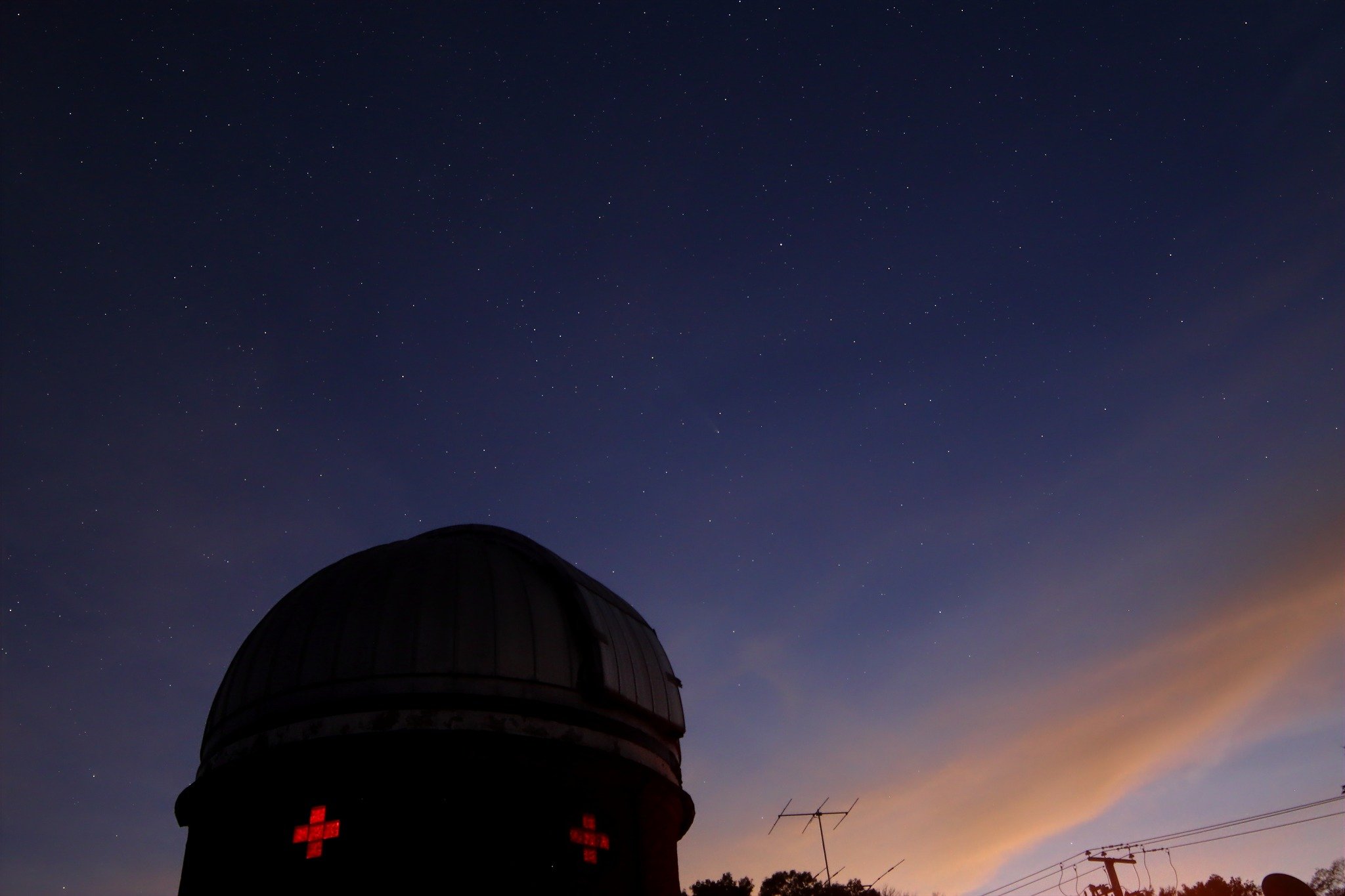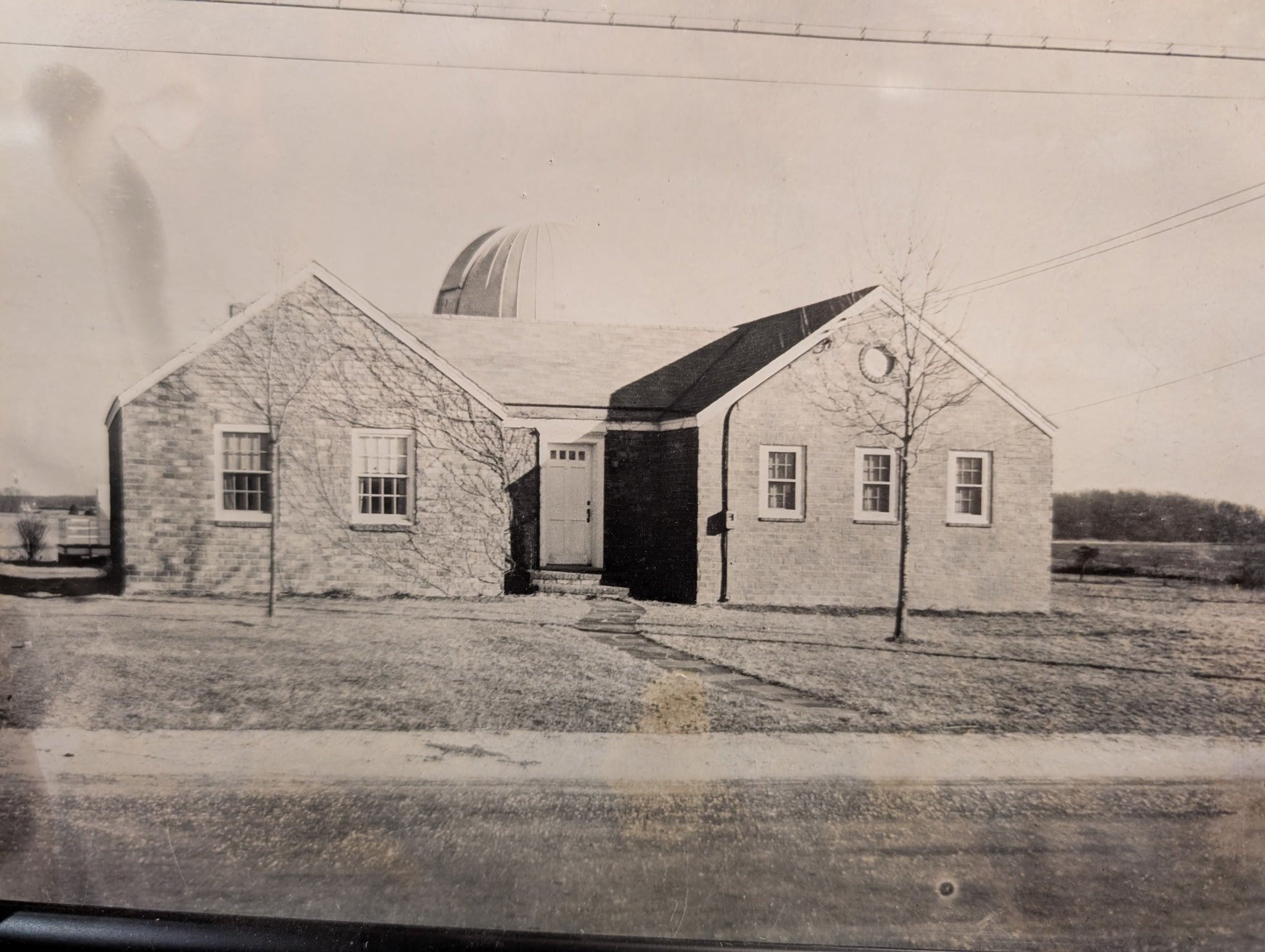
LEARN MORE ABOUT CUSTER INSTITUTE
ABOUT US
Vision
Custer Institute and Observatory is for the curious. We explore astronomy, the arts, sciences, and humanities, and stimulate fellowship amongst our members.
Mission
Custer Institute and Observatory is a gateway to the known and unknown universe, where all who are curious are welcome to explore astronomy, the arts, sciences, and humanities in accessible ways. We do this by putting people at the center of our decisions and programming, providing opportunities for education and research, and inspiring our community to foster individual and collective curiosity.
Custer Institute is named after Charles Wesley Elmer's wife, May, whose maiden name was Custer. The Institute was founded in 1927 by Elmer and other amateur astronomers.
Custer Institute is Long Island's oldest public observatory.
Elmer was an amateur astronomer and scientist who co-founded the Perkin-Elmer Optical Company.
Elmer would host his astronomy friends at his home in Cedar Beach, New York.
In 1927, Elmer and his friends formed the Custer Institute to honor their shared interest in astronomy.
The Institute was incorporated as a non-profit educational corporation in New York in 1942.
Explore Our Historic Collection
Custer Observatory houses a fascinating array of historic artifacts, telescopes, and instruments that showcase the evolution of astronomy.
From centuries-old optical devices to member-built telescopes, the collection offers a unique glimpse into the ingenuity and craftsmanship of past generations. Highlights include Alvan Clark refractors, a 2.4" brass refractor, and a mid-18th century Gregorian reflector by James Short. Each piece is a tangible link to centuries of stargazing tradition, inspiring awe for past achievements and appreciation for the progress that continues to shape our exploration of the universe.
EQUIPMENT
Explore the Universe Through
Our Telescopes
We’re proud to host an incredible collection of telescopes, each with its own unique story and capabilities. Whether you’re a seasoned astronomer or a curious stargazer, our equipment opens a window to the cosmos like no other.
Whether you’re drawn to the latest technology or fascinated by the craftsmanship of vintage telescopes, there’s something for everyone at Custer Observatory. Stop by on a Saturday evening, and our dedicated volunteers will guide you through the night sky, sharing their passion and expertise.
Discover the cosmos through the lens of history, innovation, and community. Join us under the stars!
Under the Dome
10" Zerochromat Refracting Telescope
Located in our main observatory dome, this extraordinary telescope is the largest of its kind in the United States. Designed by award-winning optician Peter Wise and manufactured in England, its innovative dialyte lenses make it apochromatic, delivering breathtaking views of planets, stars, and deep space objects.
With its long 6-foot structure and f/12 focal length, the Zerochromat provides stunning clarity, while its computer-controlled Fornax 152 mount ensures precise tracking. Adjustable height settings make it comfortable for all ages and abilities—a truly unforgettable experience for anyone who peers through its lens.
Our Gear
In addition to our flagship telescope, we boast an impressive variety of instruments, from state-of-the-art systems to rare historical pieces.
Highlights include:
25" Obsession Newtonian Reflector – A massive telescope with unparalleled light-gathering ability (currently in storage).
20" Obsession Newtonian Reflector – On loan and ready for breathtaking deep-sky views.
14" Celestron CGE-1400 Go-To Schmidt-Cassegrain – A versatile telescope for detailed planetary observation.
5" Henry Fitz Refractor Telescope - Crafted around 1850 by renowned New York telescope maker Henry Fitz Jr., this historic instrument highlights Custer Observatory's collection. Henry Fitz Jr. (1808–1863) was a pioneering American telescope maker whose work significantly advanced astronomical observation in the United States. His son, Harry Fitz, continued his father's legacy and was among the founding members of Custer Observatory.
4½" James Short Gregorian Reflector – A mid-18th century gem offering a glimpse into the history of astronomy
OUR HISTORY
Custer Institute’s roots trace back to a time long before its formal establishment. Charles W. Elmer, co-founder of the Perkin-Elmer Optical Company and an avid amateur astronomer, would gather with friends—including his future business partner, Henry Perkin—at his Cedar Beach home on weekends to share their passion for astronomy.
In 1927, this group of enthusiasts decided to formalize their camaraderie and established an astronomy organization. To honor Charles Elmer's wife, May Custer, who had graciously hosted these gatherings for years, the group named themselves the Custer Institute.
A Place to Gather, Learn, and Explore
In 1938, the Institute acquired the land it occupies today, completing the main northern building in 1939. In 1942, the Custer Institute was incorporated as a 501(c)(3) non-profit educational organization. By 1945, a second building was added, later dedicated as Dr. John W. Stokes Hall. This space, seating over 100, became the hub for an ambitious schedule of astronomy and cultural presentations, which often drew standing-room-only crowds from the surrounding farming community—a tradition that continues today.
The observatory tower and dome were added in 1947, thanks to donations from Dr. Stokes. Over time, additional facilities, including a shed housing three sliding-roof observatories, were constructed. In 2006, a new 22-foot galvanized steel dome was installed, further enhancing the observatory’s capabilities.
Custer’s Legacy and Contributions
Custer has been home to many notable members over the years, including authors and astronomers like Phil Harrington, Richard Berry, and Dava Sobel. One member, Jeff Lichtman, pioneered radio astronomy experiments at Custer, later founding the Society of Amateur Radio Astronomers, an international organization with hundreds of members worldwide.
Although some legendary figures have indirect ties to Custer, the stories often outshine the facts. For instance, Albert Einstein vacationed nearby in 1939, purchasing sandals from David Rothman, one of the Institute’s founding members. While it’s not known whether Einstein ever visited the observatory, the connection underscores how Custer’s legacy intertwines with scientific giants.
More Than a Place—A Living Tribute to Exploration
Though George Washington never camped on its grounds, nor Einstein gazed through its telescopes, Custer Institute & Observatory continues to honor their pioneering spirits. One particularly significant moment tied to the North Fork was Albert Einstein's stay in Peconic during the summer of 1939. While vacationing there, Einstein drafted his famous letter to President Franklin D. Roosevelt. Co-authored with physicist Leó Szilárd, this letter warned of Germany's potential development of an atomic bomb and urged the United States to accelerate its own research into uranium fission. This pivotal document ultimately led to the creation of the Manhattan Project, changing the course of history.
Today, Custer Institute’s historic artifacts, educational programs, and vibrant community serve as a living tribute to such moments of profound scientific and historical importance. They ensure that the legacy of discovery, curiosity, and human ingenuity continues to inspire future generations.
BOARD OF DIRECTORS
Anne Spooner
President
Alan Cousins
Vice President
Bill Crispino
Secretary
Peter McKeon
Finance Chair
Virginia Cava
Treasurer
Farhan Ali
Director-at-Large
Justine Haupt
Director-at-Large
Ken Weakley
Director-at-Large
John Kongoletos
Director-at-Large
Custer Institute College
Scholarship Program
Supporting the Next Generation of Scientists & Innovators
The Custer Institute College Scholarship Program provides financial assistance to high school seniors from Greenport, Southold, Mattituck, and Riverhead High Schools who are pursuing careers in Science, Technology, or Engineering. Special consideration is given to students planning to major or minor in Astronomy, Aerospace, Optics, or Space Science.
Two scholarships, up to $500 each, are awarded to college students selected by the Scholarship Committee each year.
Eligibility & Application Process
Open to graduating seniors from Greenport, Southold, Mattituck, and Riverhead High Schools.
Applicants must pursue college studies in Science, Technology, or Engineering, with preference for Astronomy, Aerospace, Optics, or Space Science.
Print & Mail a letter of interest outlining:
Name
High School
College of choice
Your background and academic interests.
Career goals.
Why should you receive this scholarship?
Your Academic Record
Deadline: April 15 each year.
Recipients announced: May 31.
Mail to: PO Box 1204 Southold, New York 11971
Through this program, the Custer Institute is committed to fostering a brighter future by supporting students passionate about exploration and discovery.















